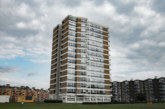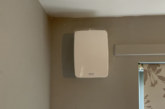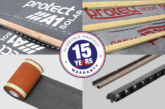 In the next part of our series on the importance of correct domestic ventilation, John Kelly, Marketing Manager at Airflow Developments, discusses the minimum legal standards that must be achieved.
In the next part of our series on the importance of correct domestic ventilation, John Kelly, Marketing Manager at Airflow Developments, discusses the minimum legal standards that must be achieved.
Adequate ventilation in domestic properties is vital to protect the health of residents by preventing the build-up of pollutants, damp and carbon dioxide that can contribute to a range of health conditions. Ventilation is also important to protect the fabric of the building as condensation from daily activities such as cooking and washing can quickly cause damp and mould to form.
For England and Wales, Approved Document F1 Means of Ventilation of the Building Regulations provides guidelines for domestic ventilation. It specifies four primary systems for
ventilating a dwelling:
System 1: Intermittent extractor fans
System 2: Passive stack ventilation
System 3: Continuous Mechanical Ventilation
System 4: Continuous Mechanical Supply and Extract Ventilation with Heat Recovery
With certain ‘wet rooms’ in the home requiring specific levels of ventilation to remove moisture and prevent condensation, Approved Document F1 also provides the required MINIMUM extract ventilation rates for these rooms:
| Room | Intermittent Extract | Continuous Extract |
| Toilets | 6 l/sec (22 m3/hr) | Minimum High: 6 I/sec |
| Bathrooms | 15 l/sec (54 m3/hr) | Minimum High: 8 l/sec |
| Utility | 30 l/sec (108 m3/hr) | Minimum High: 8 l/sec |
| Kitchens adjacent to hob with a ducted cooker hood | 30 l/sec (108 m3/hr) | Minimum High: 13 l/sec |
| Kitchens without a ducted cooker hood | 60 l/sec (216 m3/hr) | Minimum High: 13 l/sec |
Note: For Continuous Extract, Approved Document F sets the minimum as the whole house ventilation rate. Consult the official document for additional information about other requirements for specifying a fully compliant system.
It is important to consider that where renovation, maintenance or improvement to the fabric of the building has been undertaken compliant ventilation is provided. In addition to air extraction devices, make up air through trickle ventilators, slot vents and air bricks — together with undercuts to internal doors — should be ensured to create air circulation throughout the dwelling.
Selecting a suitable ventilation solution for a property will depend on the characteristics of the building, the needs of tenants and any budgetary restraints. However, the chosen solution must meet the minimum legal requirements. Engaging with a ventilation specialist will help housing providers to ensure that they are protecting the health of residents and the fabric of the building.










